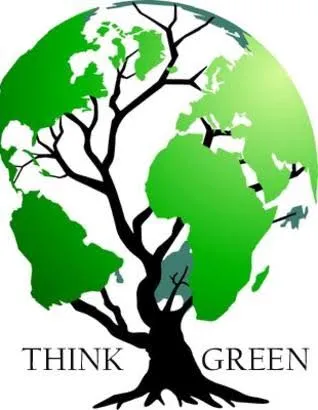Most of the issues ravaging out earth ranging from rise in sea level, deforestation, desertification, et al arise from carbon emissions. Some heat energy leave the Earth’s surface into space which is a natural phenomenon. Our earth would have been cold by now because of the heat escape but for some gases in the atmosphere that can trap escaping heat energy, causing some of it to bounce back to the surface.
These gases are called greenhouse gases, and they keep our planet warm. Carbon dioxide is one of the important greenhouse gas. Water vapour( H²O), methane(CH⁴), ozones (O³), nitrous oxides(N²O), Chlorofluorocarbons (CFCs)
Hydrofluorocarbons (HCFCs and HFCs) are the other greenhouse gases

Source: gas emission
Oil, coal and natural gases, major sources of carbon are regularly being used and energy is constantly being infused into the atmosphere. The burning fuel releases waste gases, including carbon dioxide. An increase in the human population means an increase in the amount of fuel used, resulting in more carbon dioxide being released.
The extra carbon dioxide released increases the greenhouse effect. More heat is trapped and being returned by the atmosphere, causing the planet to become warmer than it should be naturally. This phenomenon causes global warming.
These extra Carbon emissions contribute to climate change, which has serious consequences for humans and their environment. Every moment fossil fuels are burned, carbon dioxide and other greenhouse gases are released into the atmosphere. These carbon emissions raise temperatures by trapping solar energy in the atmosphere. This causes altering water supplies and weather patterns, cause changes in the growing season for food crops and threatens coastal communities with rising sea levels.
EFFECTS OF CARBON EMISSION
- Shrinking Water Supplies
Carbon dioxide can remain in the atmosphere for up to 50 to 200 years, so gases emitted now will continue to warm the climate in the future. predictions suggest that climate change will cause the need for clean water to increase while the supply of water shrinks. Water is a vital commodity not only essential to human health but also to manufacturing processes and the production of food. Climate change is expected to increase rainfall in tropical areas, thereby causing an increase in pollutants being washed into drinking water supplies. Rising sea levels will cause infiltration of salt water into some freshwater systems, increasing the need for desalination and clean drinking water.
- Increasing Incidents of Severe Weather
Carbon emissions lead to Global warming which has the potentials to result in more wildfires, droughts and tropical storms, The destruction of infrastructure in extreme weather causes several human health issues, including water-borne diseases and air-borne diseases.
- Change in Food Supply
Changing weather can greatly affect the agricultural industry and the human food supply chain. Carbon emissions add to increasing temperatures and reducing precipitation, changing the growing conditions for food crops in many areas. Major changes in crop yield will cause food prices to be on the high around the world. Plus, climate change triggered by carbon emissions forces animals, many of which are hunted as food, to migrate to higher altitudes or to the northern habitat.
HOW YOU CAN CONTRIBUTE IN REDUCING CARBON EMISSION
- Plant a Garden
Afforestation and reafforestation are quick and easy ways to reduce your carbon footprint. It is no news that plants absorb carbon dioxide – a beneficial relationship for humans, that we should all be seeking to nurture. Planting some bee-friendly flowers, trees, or garden can go q long way in giving you a cool air. Balcony gardens are great for urban dwellings. Cities tend to be hotter than rural areas because of
a. Vast pavement areas
b. Concrete buildings, and
c. Increased human activity.
Creating more green areas can mitigate this effect and lead to cooling, which will be a necessity with the current worsening climate change.

Source: planting trees for property survival
- Reduce, Reuse, Recycle, Refuse.
In manufacturing this can be done by recycling the packaging materials, selling of the obsolete inventory of one industry to another industry looking to buy unused items at lesser price to become competitive and reduce disposing off into the soil.

Source: think green
- DRIVE LESS.
By walking or biking to the destination rather than driving,you not only save money on fuel, but you will burn less fuel and release fewer emissions into the atmosphere. However, if walking is not an option, you can consider the mass transportation option.

Source: transit
World leaders have stood up to create alternative sources of energy. And despite the improvement in providing clean energy, carbon emission still continues to rise as the increase in carbon emission hit 1% in 2017; the highest since 2013. It seems carbon cannot be outdone in daily living so the best bet for us is to provide media for improving our present environment as we look for other alternatives for carbon
REFERENCES